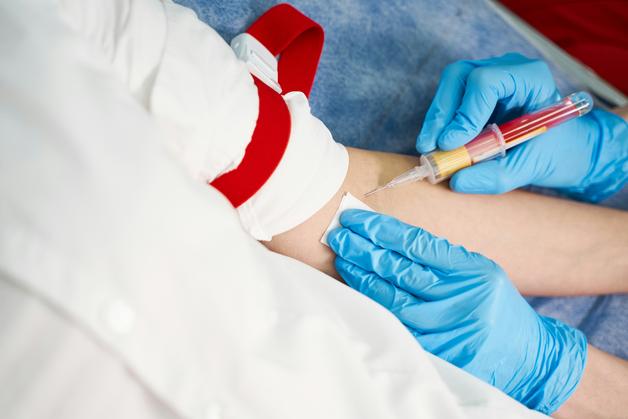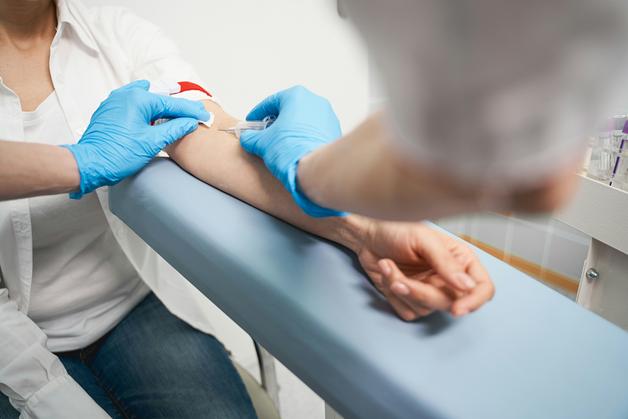Navigating early questions surrounding parenthood, few moments match the anticipation and uncertainty brought on by a pregnancy test. For parents or those hoping to become parents, queries crowd the mind: When is the best moment to test? How reliable is that faint line? Home test or clinic visit, which path to choose? Add to that the flurry of physical signs that tease the imagination—missed periods, fleeting nausea, sore breasts—and it’s little wonder that confusion can reign. A pregnancy test, while small and unassuming, often stands at the center of this emotional whirlwind. Exploring how a pregnancy test works, the science behind hCG, timing strategies, interpreting elusive test lines, and the impact of health or medications—this guide provides clarity where it is needed most.
Understanding Pregnancy Tests: The Science of hCG and Detection
How does a pregnancy test truly operate? It’s more than just a yes or no. The secret lies in detecting human chorionic gonadotropin (hCG), a hormone produced by the placenta mere days after a fertilized egg implants in the uterine wall. As this vital hormone surges—doubling roughly every two to three days in early gestation—the pregnancy test picks up on its presence, delivering rapid feedback. Home urine-based tests rely on immunoassays: specialized antibodies capture even low levels of hCG, sometimes as little as 20–50 mIU/mL. In contrast, laboratory-based blood tests delve deeper, registering hCG levels as low as 1–2 mIU/mL, which paves the way for earlier and more reliable detection.
Urine tests, often chosen for their accessibility, can be performed at home with privacy and minimal stress—no lab coat required. Blood tests, meanwhile, are reserved for situations demanding precision: ambiguous symptoms, early detection, or the monitoring of complex pregnancies. The elegance lies in hCG’s exponential rise post-implantation, which transforms a standard pregnancy test from guesswork into reliable science.
Timing and Accuracy: When and How to Take a Pregnancy Test
Parents frequently wonder—when is the ideal time to grab that pregnancy test from the pharmacy shelf? For most, accuracy peaks right after the first missed period. Why not sooner? Testing before the endometrium welcomes the embryo often results in a false negative, as hCG lingers just below detection thresholds. The golden rule for early assurance: use first-morning urine. Overnight, hCG accumulates, creating a concentrated sample less likely to be diluted by hydration habits.
Irregular cycles can confound plans. If your period operates on an unpredictable schedule, consider waiting at least 21 days after a potential conception event. Early detection tests promise positive results days before a missed period, but faint lines and ambiguity are more likely—visual confusion that can spark anxiety, rather than clarity.
Three essential factors govern accuracy:
- Timing: Wait until after the first missed period or at least two weeks post-ovulation.
- Sample Quality: Prefer first-morning urine.
- Meticulous Adherence to Instructions: Each brand and format demands slightly different steps, from dipping the strip to reading lines within the specified time window.
Wondering about evaporation lines? These ghostly marks often appear if a test sits too long—don’t rely on results outside the recommended reading period. Faint lines? Even the palest shimmer may signal pregnancy if it shows within the test’s window.
Home Urine Tests, Clinical Methods, and Choosing What’s Right for You
Modern options abound—and so do choices. Home urine pregnancy tests are the clear frontrunner for privacy, simplicity, and affordability (often less than the price of lunch). Brands claim >99% accuracy, provided the timing and instructions are respected. Bulk packs and generics offer economic solutions for repeat testing, a comfort for those in limbo.
Yet, not all situations are straightforward. Clinical urine tests mirror home versions but are administered with medical oversight—the process feels less vulnerable for some. Then there are the quantitative and qualitative blood tests. Qualitative tests are binary—pregnancy detected, or not. Quantitative assays, on the other hand, measure precise hCG concentrations, arming healthcare providers with information to estimate gestational age, detect twins, or monitor for complications such as ectopic pregnancy or evolving miscarriage.
Blood tests offer unique value in complex cases:
- Early detection (before a missed period)
- Monitoring unusual symptoms or conception using assisted reproductive technologies
- Tracking hCG rise for reassurance or to investigate possible complications
A single word of reassurance: Both over-the-counter and clinical pregnancy tests benefit from decades of refinement, and when used properly, boast a high degree of credibility.
Interpreting Results: Positive, Negative, and the Mystery of Faint Lines
Staring at a pregnancy test, waiting for lines or symbols to appear, the heart often races. What do those lines actually mean? Here’s the science behind the suspense:
- Positive Result: A clear second line, a plus sign, or digital display reading “pregnant”—confirmation of hCG’s presence.
- Negative Result: One line, a minus sign, or “not pregnant” generally means insufficient or absent hCG.
- Faint Line: Even a faint line within the result window suggests hCG detection—likely a very early pregnancy. The line’s intensity reflects hCG concentration, not pregnancy viability.
Caution: Reading outside the window time can reveal evaporation lines—colorless or gray streaks unrelated to true hormone detection.
Test in the morning, follow instructions to the letter, and retest in a few days if results are unclear or periods remain absent. For ambiguous cases, professional consultation and a blood test provide peace of mind and a definitive answer.
Special Scenarios: Birth Control, Medical Conditions, and Ectopic Pregnancy
Curious whether birth control clouds the accuracy of a pregnancy test? Good news: neither pills nor devices interfere. Only fertility medications containing hCG (commonly used in reproductive treatments) potentially trigger false positives. Medical outliers such as rare tumors or recent miscarriage can also affect results. Uncommon, yet worth acknowledgment.
Ectopic pregnancy—when the embryo implants outside the uterus, often in a fallopian tube—remains an urgent concern. hCG is still produced, and a positive test may appear, but the rise of hCG can be slower or abnormal. Symptoms like sharp pelvic pain, abnormal vaginal bleeding, or dizziness demand emergency assessment. Blood tests and ultrasound form the medical team’s investigative toolkit.
Beyond Home Testing: The Evolution and Future of Pregnancy Detection
How far has pregnancy test technology advanced? Consider the leap from frog-based bioassays in the 1930s to contemporary rapid immunoassays. Today’s digital tests take uncertainty out of the equation, displaying clear results such as “pregnant” or “not pregnant”—eliminating guesswork over how to interpret faint color bands.
Emerging trends signal a new era. Smartphone-enabled devices now sync test results for future tracking. Research continues into earlier detection, seeking alternative biomarkers to identify pregnancy even before hCG emerges in urine or blood. Looking ahead, wearable technology may one day deliver real-time confirmation—science fiction no more.
Myths, Realities, and the Power of Medical Information
Internet forums and word-of-mouth are filled with myths—myth: home pregnancy tests are unreliable, myth: faint lines don’t count, myth: all tests are identical. Scientific evidence tells a different story. When used after a missed period, most home tests rival clinical laboratory accuracy. Faint lines are meaningful, provided they appear promptly. Sensitivities differ between brands and formats; consult package inserts to understand unique features and limitations. Even amidst uncertainty, practical steps exist: retest, consult a healthcare provider, or request blood analysis.
Key Takeaways
- The pregnancy test detects hCG, a hormone produced right after embryo implantation—a process invisible to the naked eye, but readily recognized by sensitive assays.
- Home urine versions, when used after a missed period and with correct timing, provide accurate, affordable, and accessible answers for most families.
- Clinical blood tests allow for earlier detection and quantitative tracking, which is especially valuable in cases of medical urgency, complex pregnancy history, or fertility treatments.
- Interpret results carefully, focusing on clear lines within the allowed window; repeat testing and medical advice transform uncertainty into assurance.
- Birth control does not affect pregnancy test results; certain fertility medications or rare health conditions can.
- Modern options—digital, app-connected—extend support, while research continues to innovate, feeding curiosity and empowering parents.
- A wide range of quality pregnancy tests is available in stores and online, with price points to fit nearly any budget.
- Medical expertise is always within reach for interpreting ambiguous results, monitoring special conditions, or confirming early pregnancy—consider reaching out for guidance with any persistent doubts or concerns.
- For additional personalized advice and free children’s health questionnaires, explore the Heloa app—a supportive resource for every parent’s journey.
Armed with clear, medical information and modern tools, parents can approach pregnancy testing with confidence—resolute, informed, and ready for the next chapter.
Questions Parents Ask
Can certain medications affect the results of a pregnancy test?
Most common medications, including antibiotics and most forms of birth control, do not interfere with the accuracy of home pregnancy tests. However, medications that contain hCG (sometimes used in fertility treatments) may cause a false positive response. If you are following a fertility protocol or have any doubts, it’s always a good idea to speak with a healthcare professional to ensure your interpretation is reliable and tailored to your situation.
Is it possible to have a false positive or false negative pregnancy test?
Yes, while most home pregnancy tests are very reliable when used correctly, a false positive or false negative can occasionally happen. A false negative is more likely if the test is taken too early, before enough hCG is present in the urine. Conversely, a false positive result is uncommon but may occur in cases where fertility medications with hCG have been used or, more rarely, due to certain medical conditions. If results leave you feeling uncertain or anxious, waiting a couple of days and testing again, or consulting your healthcare provider, can bring peace of mind and clarity.
What should I do after a positive pregnancy test?
First of all, congratulations if you are hoping for this result—receiving a positive test can bring many emotions. The next supportive step is to make an appointment with your healthcare provider. Early medical follow-up allows for confirming the pregnancy, discussing next steps, and receiving personalized advice specific to your needs. Take time to process your feelings, and remember, it’s normal to have many questions. It’s always okay to ask for guidance or reassurance as you move forward.










